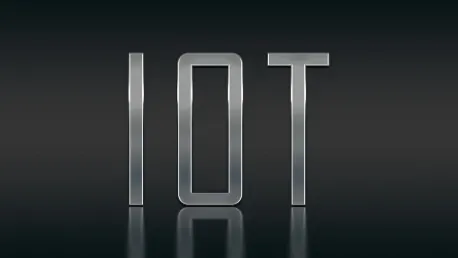The global IoT (Internet of Things) insurance market is on the brink of experiencing explosive growth over the next decade. The market, valued at USD 37.0 billion in 2023, is projected to skyrocket to USD 430.1 billion by 2032, driven by a compound annual growth rate (CAGR) of 30.38% from 2024 to 2032. This rapid expansion is attributed to advancements in IoT technology, evolving regulatory landscapes, and increasing adoption rates across various sectors. In this article, we delve into the key factors propelling this growth, the market segments benefiting the most, and the prominent players shaping the industry’s future.
Market Size and Projections
The Internet of Things (IoT) has revolutionized numerous industries, and insurance is no exception. With the market currently valued at USD 37.0 billion in 2023, forecasts indicate a remarkable growth trajectory reaching USD 430.1 billion by 2032. This surge represents an impressive CAGR of 30.38%, underscoring the significant impact IoT technology is having on the insurance sector. The increasing proliferation of IoT devices, which provide insurers with real-time data and insights, is one of the primary drivers behind this growth.
These technological advancements enable more accurate risk assessments, improved claims processing, and enhanced customer experiences. For example, IoT sensors in vehicles can monitor driving behavior and environmental conditions, allowing insurers to offer more personalized policies and pricing models. Similarly, connected devices in homes and businesses provide valuable data on security, fire risks, and water damage, enabling insurers to mitigate losses and streamline claims processing. Furthermore, the integration of artificial intelligence (AI) and machine learning (ML) with IoT technologies is bolstering the industry’s capabilities, allowing for even deeper insights and more innovative insurance products.
Regional Dominance
North America currently leads the global IoT insurance market, thanks to its advanced technological infrastructure and high adoption rates of IoT devices. The region’s established market players and supportive regulatory frameworks create an environment conducive to innovation and growth. Major insurance companies and tech firms in North America are heavily investing in IoT solutions to stay competitive and meet the rising demand for data-driven insurance products. This regional dominance is expected to continue as North America’s markets and regulatory environments further evolve to support IoT integration.
Several other regions are also contributing to the market’s expansion. The Asia-Pacific region, for instance, is experiencing rapid development due to increasing investments in IoT infrastructure and rising consumer awareness. Countries like China, Japan, and South Korea are making significant strides in IoT technology, driving growth in the insurance sector. Europe, Latin America, and the Middle East and Africa are also emerging as significant players, each with unique growth dynamics and opportunities. In Europe, strict data privacy regulations like the General Data Protection Regulation (GDPR) are shaping the development and deployment of IoT insurance solutions, ensuring high standards of data security and consumer trust.
Insurance Type Segmentation
Within the IoT insurance market, property and casualty insurance hold the lion’s share. This dominance is largely due to the widespread use of IoT technologies in risk assessment, loss prevention, and claims processing. Sensors and connected devices provide insurers with valuable data, enabling them to offer more tailored and cost-effective policies. For instance, smart home devices can detect and alert homeowners to potential fire or water damage, allowing insurers to reduce claim amounts and provide discounts for proactive risk management. Commercial properties also benefit from IoT solutions that monitor structural integrity, energy usage, and security systems.
Life and health insurance segments are also witnessing growth, albeit at a slower pace. The adoption of wearable devices and health monitoring systems is enhancing insurers’ ability to track and manage policyholders’ health, leading to more personalized insurance products. Wearables like fitness trackers and smartwatches collect data on physical activity, heart rates, and sleep patterns, enabling insurers to offer wellness programs and incentivize healthy lifestyles. As these technologies continue to evolve, their impact on the life and health insurance sectors is expected to intensify, providing even more opportunities for personalized and preventive care.
Component Segmentation
The IoT insurance market is segmented into solutions and services, with solutions currently holding the larger share. IoT solutions encompass a range of technologies that facilitate the collection, analysis, and utilization of real-time data from connected devices. These solutions are critical for insurers looking to harness the full potential of IoT. For example, telematics systems in vehicles provide real-time data on driver behavior, allowing insurers to offer usage-based insurance policies that reward safe driving. Smart building solutions monitor environmental conditions and energy usage, helping insurers assess risks and offer more accurate premiums.
On the other hand, services in the IoT insurance market include consulting, implementation, and maintenance support. These services are essential for the seamless integration of IoT technologies into existing insurance frameworks. Consulting services help insurers understand the potential benefits and challenges of adopting IoT solutions, while implementation services ensure that these technologies are properly integrated and configured. Maintenance support provides ongoing assistance to keep IoT systems running smoothly and securely. As insurers continue to adopt IoT solutions, the demand for specialized services is likely to grow in parallel, providing a robust market for IoT service providers.
Application Segmentation
IoT insurance finds applications across various sectors, with automotive, transportation, and logistics emerging as dominant segments. These industries benefit significantly from IoT technologies, which facilitate fleet management, enhance operational efficiency, and reduce accident risks. The adoption of telematics, in particular, has revolutionized the way insurers assess and price motor insurance policies. Telematics devices collect data on driving behavior, such as speed, braking, and cornering, allowing insurers to offer usage-based insurance policies that reward safe driving. This not only benefits insurers by reducing claims but also encourages safer driving habits among policyholders.
Other sectors, such as commercial and residential buildings, business and enterprise, and agriculture, are also tapping into the potential of IoT insurance. In commercial and residential buildings, IoT devices help monitor and mitigate risks related to security, fire, and water damage. For instance, smart smoke detectors and water leak sensors can alert property owners and insurers to potential hazards, enabling timely interventions to prevent losses. In agriculture, IoT solutions enable better management of crop health and yield, leading to more accurate insurance products for farmers. Sensors placed in the fields can monitor soil moisture, temperature, and crop conditions, providing data that helps insurers assess risks and set premiums more accurately.
Technological Advancements Driving Growth
Technological advancements are at the heart of the IoT insurance market’s growth. Improved connectivity, enhanced sensor accuracy, and device miniaturization are making IoT solutions more effective and accessible. These technologies enable insurers to collect and analyze vast amounts of data, leading to more precise risk assessments and dynamic pricing strategies. For example, advancements in wireless communication technologies like 5G are enabling faster and more reliable data transmission, enhancing the performance of IoT devices in remote or challenging environments. Improved sensor accuracy ensures that the data collected is more reliable and actionable, providing insurers with better insights into risk factors.
The integration of AI and ML with IoT technologies is another crucial factor driving the market forward. These advanced analytics tools allow insurers to uncover deeper insights from the data collected, leading to innovative insurance products and services. AI algorithms can analyze patterns in the data to predict future risks and identify opportunities for preventive measures. ML models can continuously learn and improve from the data, making predictive analytics more accurate over time. Furthermore, the rise of edge computing is enhancing the efficiency and real-time capabilities of IoT applications in insurance. Edge computing allows data processing to occur closer to the source of data collection, reducing latency and improving response times.
Data Analytics and Regulatory Support
Enhanced data analytics capabilities are revolutionizing the insurance industry by enabling more sophisticated analyses of risk and claims data. Insurers can leverage these insights to develop more accurate pricing models, improve customer experiences, and streamline claims processing. This data-driven approach allows insurers to move away from traditional underwriting methods and adopt more personalized and dynamic pricing strategies. For example, insurers can use predictive analytics to identify high-risk policyholders and offer targeted interventions or incentives to reduce their risk levels. Customer experience is also enhanced through data analytics by providing personalized recommendations and faster claims resolutions.
Regulatory support plays a critical role in fostering the growth of the IoT insurance market. Governments and regulatory bodies are implementing policies and standards to ensure data privacy, security, and interoperability in IoT applications. Supportive regulations around data privacy, security standards, and IoT interoperability facilitate growth by creating a trustworthy environment for consumers and businesses alike. For instance, regulations like GDPR in Europe mandate strict data protection protocols, ensuring that personal data collected by IoT devices is handled securely and responsibly. These regulations not only protect consumers but also build trust in IoT solutions, encouraging more widespread adoption.
Conclusion
The global Internet of Things (IoT) insurance market is poised for tremendous growth over the coming decade. In 2023, this market was valued at USD 37.0 billion, but it’s expected to surge to USD 430.1 billion by 2032, buoyed by an impressive compound annual growth rate (CAGR) of 30.38% from 2024 to 2032. This remarkable expansion can be credited to significant advancements in IoT technology, evolving regulations, and the rising adoption of IoT across various industries.
Key factors fueling this market growth include the improved efficiency and data analytics that IoT technologies offer. For insurance companies, IoT devices enable more accurate risk assessments and personalized policy offerings, which in turn lead to cost savings and enhanced customer satisfaction. Additionally, the increasing implementation of IoT solutions in sectors such as automotive, healthcare, and home security is playing a crucial role.
Market segments expected to experience substantial benefits include telematics in auto insurance, health monitoring devices in healthcare insurance, and smart home systems in property insurance. Major industry players are also driving innovation through strategic partnerships and continuous research and development. In this article, we explore the primary factors behind this rapid growth, pinpoint the most advantaged market segments, and highlight the leading companies that are paving the way for the future of IoT in the insurance sector.









